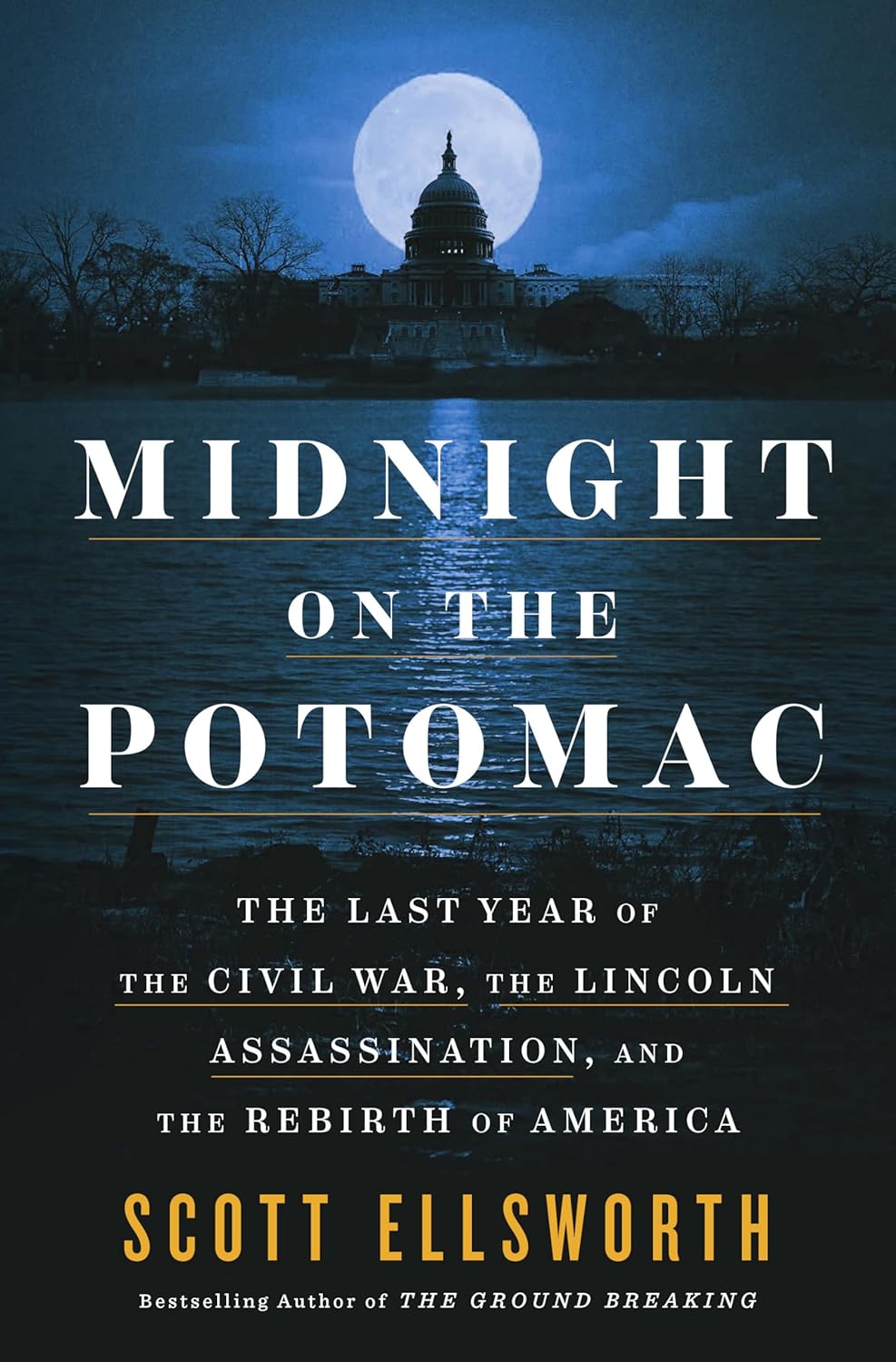
Scott Ellsworth’s Midnight on the Potomac: The Last Year of the Civil War, the Lincoln Assassination, and the Rebirth of America aims for narrative propulsion over academic granularity, and for the most part it hits the mark. If you like your history readable, brisk, and packed with scene changes, this one delivers. If you prefer footnotes that double as a second book and a meticulous weighing of every disputed claim, you may feel a tug of resistance. Either way, Ellsworth has written a compelling gateway text to the violent crescendo of the war and its immediate aftermath.
What the book sets out to do
Ellsworth zooms in on a tight timeframe, then braids together political infighting in Washington, hard-fought campaigns in Virginia, and backroom intrigues involving Confederate operatives who schemed from safe harbors in Canada. He also brings forward figures who rarely get sustained attention in single-volume treatments of the war’s final year: nurses, a sharp-eyed female correspondent named Lois Adams, newly freed men and women navigating Washington’s teeming streets, and the Union hospital complex at City Point. The point is clear. Victory did not belong to generals alone. It emerged from a national effort that pulled in civilians, contrabands, clerks, caregivers, and spies.
Pacing and storytelling
The book reads like a thriller. Chapters are short, segmented, and built for momentum. Reviewers who usually favor drier texts have admitted they stayed up late for “just one more chapter.” There is a recurring stylistic tic at the start of many chapters, a single punchy sentence designed to hook you fast. Used occasionally, that trick can be effective. Used dozens of times, it starts to feel like a thumb on the scale. Still, Ellsworth’s pacing does what he intends. The pages turn quickly, the cast rotates often, and the final year of the war feels immediate rather than embalmed.
Where it shines
A widened lens. Ellsworth’s strongest contribution may be how he reframes the Union effort by placing noncombatants in the foreground. The recurring presence of Lois Adams, the attention to nurses at City Point, and the steady focus on African American agency offer a more democratic picture of how the North won. These threads also make the narrative feel freshly populated, not simply a parade of familiar surnames.
Conspiracy and counterplot. The sections on Confederate skullduggery are propulsive, particularly the Canadian base of operations that incubated plots to terrorize Northern cities, kidnap Lincoln, and test the limits of espionage. Readers who knew only the broad strokes of 1864 and 1865 will likely find this material vivid and unsettling.
An entry point for general readers. For readers who are Civil War curious rather than Civil War fluent, Ellsworth’s tight scope and novelistic structure provide an inviting on-ramp. The back matter, especially his discursive notes on sources, offers ample avenues for further reading, even if you will not find traditional, numbered endnotes on every line.
Where it stumbles
Selectivity over adjudication. Narrative speed has a cost. When the historical record splits into multiple interpretations, Ellsworth sometimes chooses one version and moves on. In a few places, that selectivity feels too smooth, whether he is sketching the illness of Willie Lincoln, floating the possibility that Abraham Lincoln suffered from cancer late in life, or characterizing John Wilkes Booth’s stature as a performer. Specialists will want more hedging, more engagement with scholarly dissent, and a clearer map of what is disputed versus what is settled.
Teasing the Booth question. One of the book’s marquee arguments challenges the older image of Booth as a solitary fanatic. Ellsworth threads together meetings, contacts, and covert channels that suggest a broader ecosystem of Confederate support. The narrative builds toward revelation, but stops short of a definitive claim that the Confederate high command directed the assassination. Readers eager for a courtroom-grade conclusion may feel the thesis is insinuated more than demonstrated.
Style overuse. Those staccato opening lines that kick off chapter after chapter are catchy at first, then start to clang. The technique would land harder if deployed sparingly.
Who is this book for
- Newcomers to Civil War history. If you want a gripping overview of the war’s end that pulls in politics, espionage, and social change without drowning you in order-of-battle minutiae, this fits the bill.
- Readers interested in women’s roles and Black agency. The emphasis on nurses, clerks, correspondents, and contrabands enriches the canvas and corrects older narratives that treated these actors as background.
- Audiobook listeners. Ellsworth narrates the audio himself with energy and clarity. You will miss the notes section if you only listen, but the performance suits the book’s pace.
Deeply invested Civil War buffs, on the other hand, may regard the book as a good synthetic overview that occasionally sands off rough edges. They might also wish Ellsworth traded a few rabbit holes for more battlefield texture. As one seasoned reader put it, this operates at 30,000 feet. That altitude offers sweeping visibility, but it will not satisfy every tactical curiosity.
The bottom line
Midnight on the Potomac succeeds on its core promise. It is a well written, tightly framed account that reanimates a crowded historical year without losing narrative drive. It makes space for nurses and newswomen, for freed people and quartermasters, for the shadow war waged from Montreal hotel rooms. It reminds us that the end of the Civil War was not simply a military triumph. It was also a civic and moral reorientation, fragile and contested, that still reverberates.
Ellsworth sometimes privileges story over full scholarly scaffolding, and his handling of the Booth network leaves the largest question partially open. Yet he never crosses into distortion. The result is a page turner that welcomes general readers while pointing them toward deeper stacks.
If you are looking for a fast, engaging account of the Union’s closing push and the tragedy that followed at Ford’s Theatre, this is a worthy pick. It will not end the arguments. It will start a few good ones, and that is part of its value.
Ready to read it for yourself? Get your copy here: Buy on Amazon.


